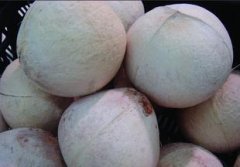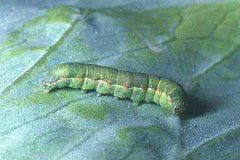Management of Coconut Diseases and insect pests: diseases, hazards and Control methods of Coconut scale insects
What is the harm of coconut diseases and insects? How to prevent and cure it?

Ecological habits: there may be 10 generations per year, and one generation takes about 33 days. Parthenogenesis is usually carried out, and the mother lays eggs under the shell around the mother. The spawning period is 8-10 days, and each female can lay 40-155 eggs. Overwintering as adults. In recent years, it mostly occurs in the dry season, mostly from September to May of the following year, but it may also be rampant when it has not rained for a long time in summer. The diet is miscellaneous and there are many hosts. Newly hatched larvae can crawl on their own and can be spread to other places by wind, birds, insects and human factors, and their distribution and damage will be affected by rainfall, wind, temperature and coconut development.
Damage: the leaves of the injured plants were damaged due to chlorophyll and tissue, and the moisture was absorbed, showing a withered and yellow phenomenon, and the serious ones were on the verge of dying, resulting in an unprecedented disaster of cocoa coconuts in Taiwan.
Prevention and control methods:
First, improve management so that coconuts can develop well. in addition, they can be used as other crops or improve the ecosystem in the coconut cultivation area, so that natural enemies can get a good environment and reduce the damage.
Second, predatory Coccinellidae natural enemies can be introduced, among which Cryptognatha nodiceps and C. politus are more promising.
- Prev

Management of Coconut Diseases and insect pests: introduction to Coal Diseases, Coal Diseases and Disease Ecology of Coconut Diseases
What is the coal disease of coconut? How is the ecology of the disease? Do you want to know. Symptoms: black soot-like hyphae are produced on the lower or upper surface of the leaf, and in serious cases, a whole piece of black cover will be formed to cover the leaf, seriously affecting the normal growth of the leaf.
- Next

Characteristics of beet armyworm: what are the larvae and adults of Spodoptera exigua
Beet armyworm is a pest, we know it, but do you know its ecological habits and morphology? Let's take a look. Ecological habits: the adults of beet armyworm lie dormant during the day and go out at night, live on the back of leaves or in the dark during the day, and begin to move and mate after sunset.
Related
- A one-day flower show brings 130 million yuan in orders! Nanhai, this Phalaenopsis exhibition is amazing
- What do the flower language and meaning of Lutheran tree mean? Precautions for planting Lutheran tree
- Encounter Chaoshan Kongfu tea, not without this cup of Phoenix single clump
- The durian market in Vietnam and Thailand is flooded. The price of imported durian has plummeted by 30-40% in a month.
- Shanghai solved the problem of local vegetable supply by planting 80,000 mu of green leafy vegetables.
- Wageningen University has become the best agricultural university in the world for the seventh time in a row.
- The strongest export season of South African grapes is full of challenges, with exports to Russia falling sharply by 21%.
- Sri Lanka is on the verge of bankruptcy, "Tea for debt" Organic Agriculture Revolution aggravates the Food crisis?
- Turning waste into earthworm manure and worm manure into organic fertilizer-A new choice for auxiliary farming
- Organic rice growers shoulder the responsibility of nurturing agricultural talents! Yinchuan Sustainable Farm with Organic Life Camp

